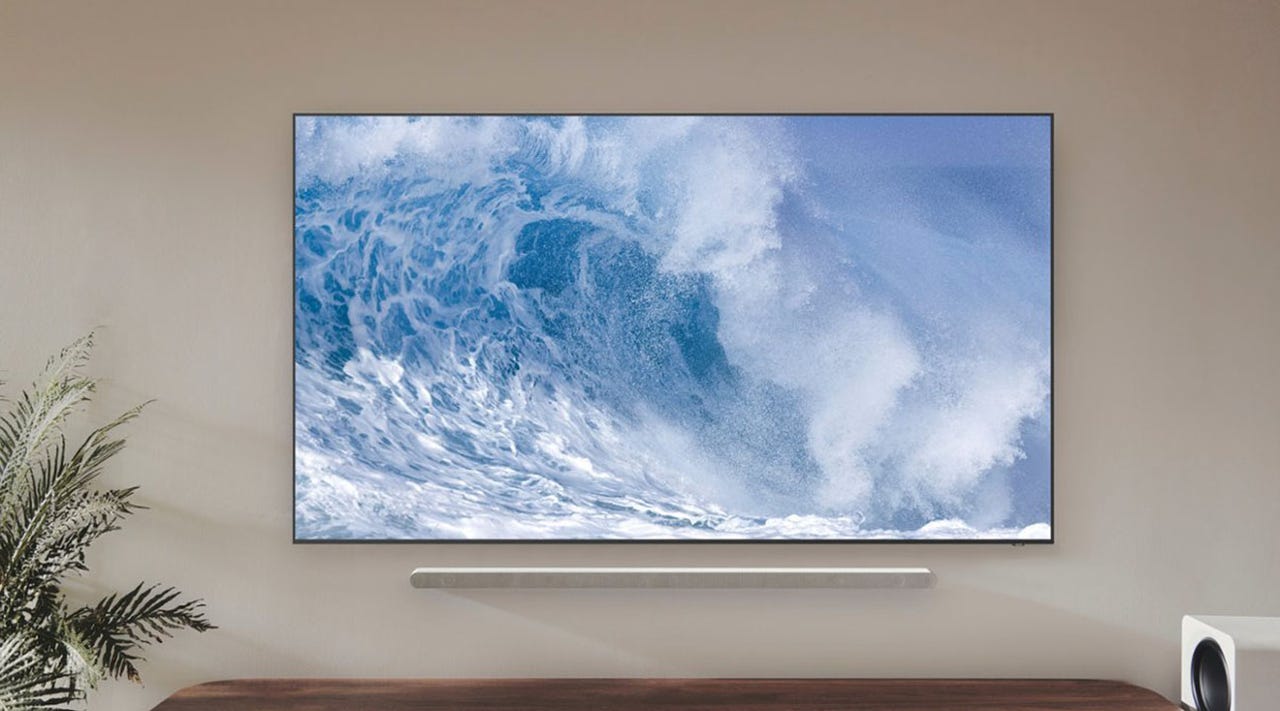































 Samsung
Samsung There's no arguing that Samsung makes fantastic TVs; the questions often come when deciding which model and display type one should buy. If you want the best of the best, two ofSamsung's more innovative display technologies, Crystal UHD and QLED, also happen to be the company's most popular, so it can be difficult to determine which one is best for your viewing pleasure.
Also: LG vs Samsung TV: Which brand should you buy?
If you're looking for vibrant displays with HDR with 4K resolution, you're on the right track no matter which of the two you buy. However, there are several notable differences for each technology, like the contrast and color accuracy, which I've listed below.
Samsung's Crystal UHD televisions don't boast as many features as its QLED models, but they're noticeably more affordable. With some light browsing, you can easily find an older class of Crystal UHD Samsung TVs on sale for under$300 . That's compared QLED TVs that typically cost above the$500 range. This makes Crystal UHD TVs a better option for a budget-conscious shopper.
If you're not looking to beef up your home theater with a massive, 8K television and just need a display to catch the news and everyday flicks, then it's not a bad move to save a few bucks and opt for a Crystal UHD TV.
Also: The 5 best budget TVs right now
You oftentimes still get a gorgeous, 4K-resolution image. And if you don't need the bells and whistles of Quantum Dot technology, then you'll settle in just right with Crystal UHD panels. For what it's worth, these TVs can also upscale HD images to deliver more clarity.
Which TV type has the widest viewing angle is debatable, but I've personally found Crystal UHD panels more favorable than QLED displays. This means that the picture quality on a Crystal UHD TV is better maintained and consistent even if you're not facing the center of the TV.
Also: The best 85-inch TVs you can buy
QLED TVs create colors using Quantum Dots, causing pictures to be more directional than the ones created by the LED backlight in Crystal UHD panels. In QLED TVs, the image looks darker and harder to discern from an angle of about 50 degrees and up. This means the image quality can degrade as you move further out from the center of a QLED TV screen. That said, ask any TV enthusiast what they prefer in terms of viewing angles and they may have different, and oftentimes clashing, opinions on which TV is superior.
QLED displays employ Quantum Dot technology to render bright, colorful, and detailed images. In fact, QLED panels have become Samsung's flagship TV tech, oftentimes competing with LG's OLED displays.
To put it plainly, there are millions of individually-lit pixels in a QLED TV, each emitting a specific color to build out the overall image you see on screen. This complex arrangement of pixels gives QLED the edge when it comes to color accuracy, sharpness, and vibrancy.
Samsung's line of high-end QLED televisions supports what it calls Quantum Processor, which uses artificial intelligence to upscale the picture quality. The TVs are able to recognize lower-resolution videos and images and proactively upscale them with meticulous control over details like backlight dimming to improve the viewer's experience. That way, 1080p content can look like 4K, and 4K content can look like 8K.
The Quantum Dots that make up the QLED panels are capable of emitting not only brighter and sharper images but darker ones for low-lit scenes. QLED displays outperform both LCD and LED displays in terms of color reproduction and, naturally, the images offer a superior contrast ratio.
Also: OLED vs QLED: Which is better for you?
An easy way to visualize this difference is by turning off the light that your TV is in and seeing how the screen looks when there's nothing playing. With UHD panels, you may see what's called backlight bleeding or patches of lighter pixels even though the screen should be black.
The latest Samsung QLED 4K model features the brand's Quantum HDR 8X for 4K upscaling, along with 3D audio.
View at Best BuySamsung's Class 7 Series is not the latest and greatest, but with a large 65-inch Crystal UHD panel and 4K resolution, it's a fantastic choice for budget shoppers.
View at Best BuyAmazon's Fire TV Omni Series delivers 4K video resolution that's Dolby Vision certified and supported by Alexa hands-free controls.
View at Amazon Hot Tags :
Our process
Home & Office
Home Entertainment
TVs
Hot Tags :
Our process
Home & Office
Home Entertainment
TVs